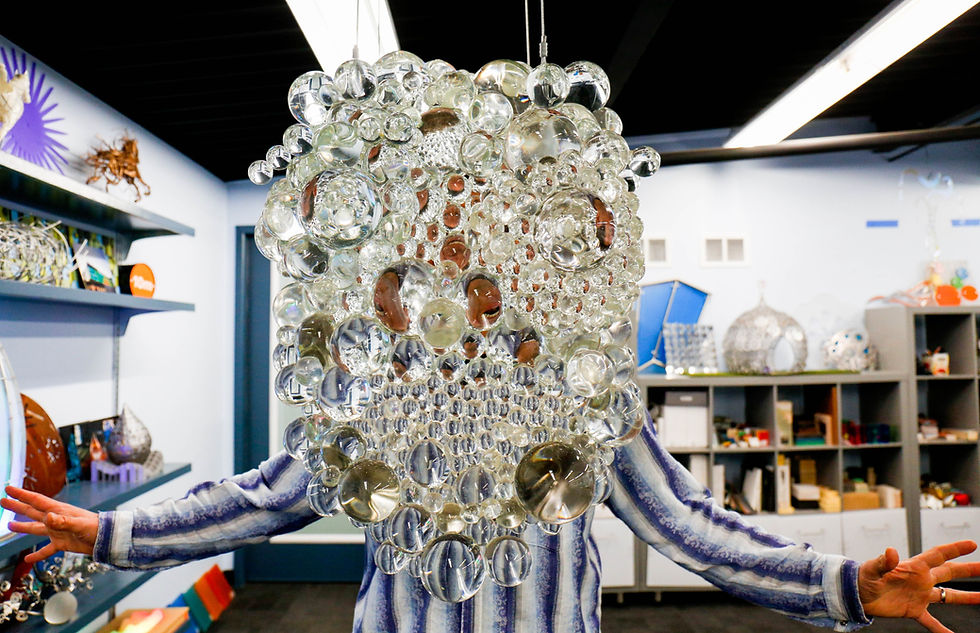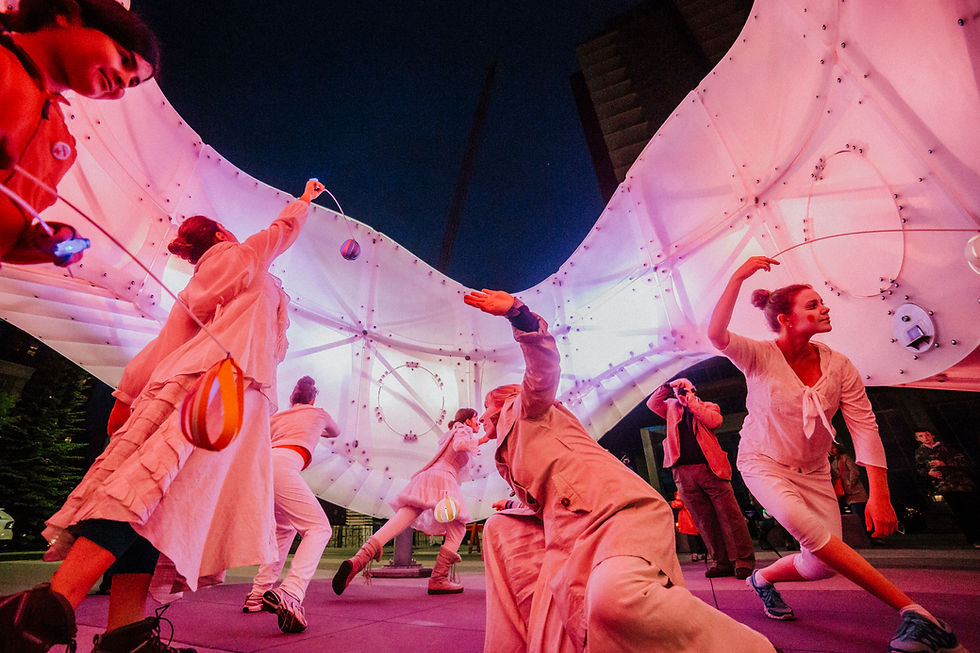Interactivity & Technology
- Creative Machines

- Jul 8, 2021
- 3 min read
The most fundamental rule for interactive art is to respect people's agency. There should be a clear and repeatable connection between what people do and how an artpiece reacts. That's how they can make the artpiece an extension of themself and begin to play with it.


Only Connect, recently installed in a children's library in Fort Worth, has a series of secret buttons hidden among the book stacks. Each button triggers an animation inspired by the subjects of the books around it: sports, magic, undersea life, military history, etc.

Children can also bring their favorite book to a kiosk and project the colors from that book onto the immersive artwork overhead.

Chinook Arc was inspired by the Chinook clouds that sometimes form in Calgary. It is a colored cloud you can duck into and control with your phone or colored objects you bring with you.

I considered creating an app or other direct method of interactivity, but instead developed an optical sensor that responds to whatever pattern of colors it sees in front of it. A little shelf lets people rest their mobile phone on the sensor for a few minutes - just enough time to play a music video and dance around inside the cloud.

When people are not interacting with Chinook Arc, it plays hours of light show programming that I created. Rather than use light show software, I used a video camera and a workshop filled with colored objects.

I refined the sensor for Small Talk About the Weather. When people are not interacting with the art, it plays NOAA weather footage of the Oklahoma City area. When people press the button to interact, the sensor picks up colors from their clothing, sees their hands waving in front of the sensor, and captures whatever colors and motion are playing on their phone screen.

One of the favorite actions with Small Talk About the Weather is waving your hands in front of the sensor and watching five dark bands moving across the 110 foot length of the sculpture, like a giant hand in the sky.

I've made a series of sculptures that give people the chance to change the lighting for a few minutes. I chose a simple button with tactile feedback and a light ring so that people with reduced sight or mobility could find and activate it. Why add obstacles to interactivity.

Fish Bellies takes this level of control to an extreme, giving visitors independent control over hue and saturation for different regions. This is a sculpture series intended for people to spend time in, so greater control is appropriate.

The ring of light and tactile feedback makes it easy to change colors even if you can barely see the button.

Colors evoke strong feelings because people associate them with teams, emotions and times of their lives. Each of these sculptures has a complex series of color changes programmed into them. But when a visitor activates them, they drop what they're doing and let the visitors control them. After a few minutes, the sculptures go back to what they were working on.

Desert O was my first interactive sculpture, created in 2014 when super bright LEDs first became available. This sculpture has a different light sequence for every day of the week, painstakingly programmed in 8-bit assembly language in the pre-Arduino, pre-Raspberry Pi days. Desert O also has a secret button. Of the 100 or so visible fasteners that dot its surface, the south-most bolt at knee height is a secret touch-sensitive button that allows visitors to change the sculptures colors.




Comments